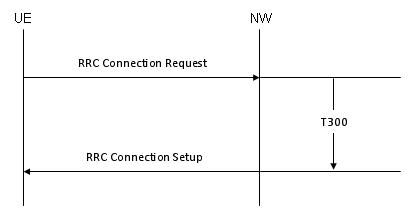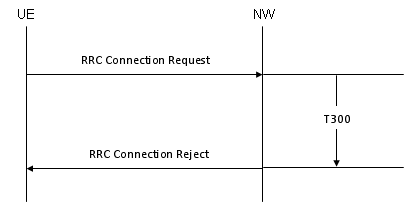|
T300
Timer T300 is used during the RRC Connection Establishment procedure to supervise the time between the UE initiating an RRCConnectionRequest or RRCConnectionResumeRequest and receiving a response from the network, such as an RRCConnectionSetup, RRCConnectionReject, or other acknowledgment messages. It ensures timely handling of connection establishment and avoids indefinite waiting in case of network unresponsiveness.
Importance of T300 are :
- Supervising Connection Setup: T300 ensures that the UE does not wait indefinitely during RRC connection setup.
- Efficient Resource Management: By resetting MAC and RLC configurations upon expiry, T300 prevents resource wastage.
- Supporting Fallback Mechanisms: In case of failures, T300 facilitates fallback to alternative procedures or cells.
- Optimizing Network Interaction: By incorporating mechanisms like connection establishment failure offsets, T300 helps optimize the UE’s behavior in challenging network conditions.


Key Scenarios Involving T300
Starting T300:
- When the UE sends an RRCConnectionRequest or RRCConnectionResumeRequest, Timer T300 is started to supervise the connection setup process.
- If the UE falls back from EDT (Early Data Transmission) to standard RRC connection establishment, Timer T300 is restarted.
Actions on T300 Expiry:
- If Timer T300 expires without receiving an RRCConnectionSetup or RRCConnectionReject:
- The UE resets its MAC configuration.
- Re-establishes the RLC for all existing radio bearers (RBs).
- Informs upper layers about the failure to establish or resume the connection with a suspend indication.
- May apply a connection establishment failure offset (e.g., connEstFailOffset) to deprioritize the current cell during reselection attempts.
- For NB-IoT or configurations supporting connection establishment failure offsets, the UE adjusts reselection parameters for the failed cell temporarily.
Stopping T300:
- Timer T300 is stopped upon successful reception of:
- RRCConnectionSetup
- RRCConnectionResume
- RRCConnectionReject
- It is also stopped if the upper layers abort the connection establishment procedure or in response to a RRCConnectionRelease message.
Impact on Cell Reselection:
- If the UE performs cell reselection while T300 is running:
- T300 is stopped, and the UE restarts the connection establishment process in the newly selected cell.
Handling Connection Failures:
- After T300 expiry, the UE stores details about the failed connection attempt (e.g., failedCellId, signal measurements, and other metrics) in a variable for future reporting or debugging purposes.
- The UE may also apply predefined offsets to deprioritize the failed cell and improve the likelihood of success in subsequent attempts.
Emergency and Special Cases:
- For emergency services or scenarios like Early Data Transmission (EDT), Timer T300 supervises fallback mechanisms, ensuring efficient handling of time-critical communications.
|
|

